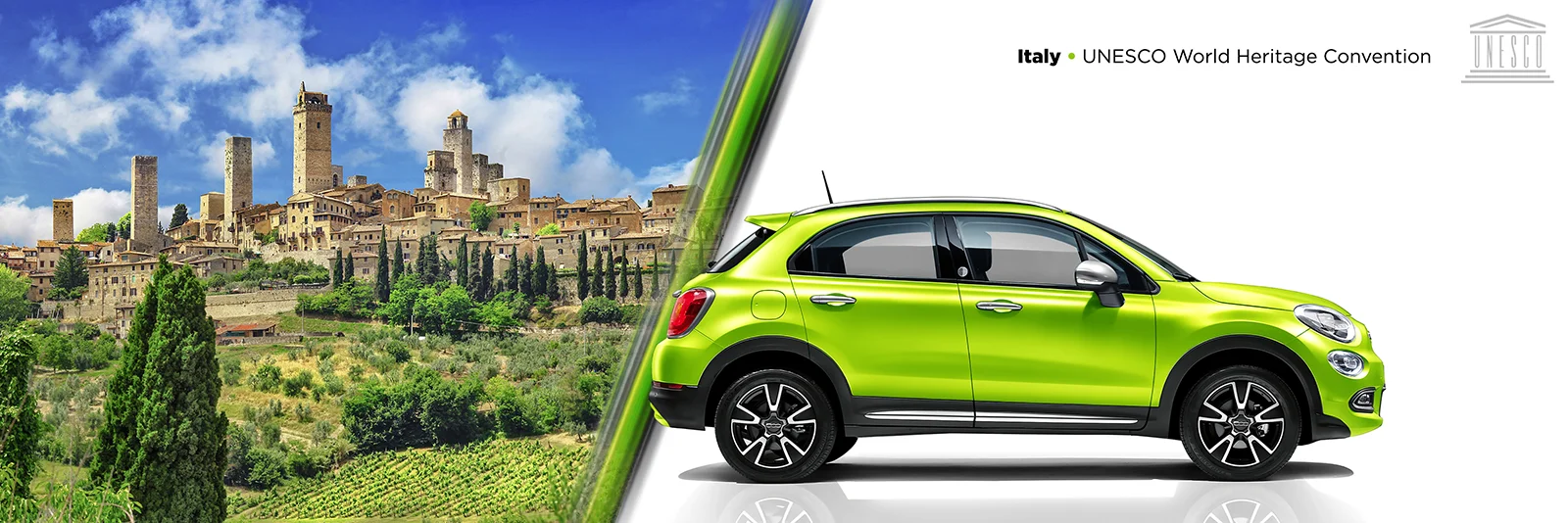IT
EN
ES
FR
IT
EN
ES
FR
Known as the "Town of Fine Towers," San Gimignano is famous for its fourteen medieval towers, which once symbolized the prestige and prosperity of noble families.
The distinctive look of San Gimignano is reflected in its well-preserved buildings, narrow cobbled streets, and welcoming squares. The historic center is dotted with Romanesque and Gothic churches, such as the Collegiate Church of Santa Maria Assunta, housing artworks of great artistic value. The medieval architecture provides a window into the past, allowing visitors to immerse themselves in the life of that era.
Furthermore, San Gimignano is renowned for its culinary tradition, especially for the famous Vernaccia wine. The local culinary art, rooted in ancient times, is a delight for the palate of anyone who visits this charming medieval town. Inclusion on the UNESCO list underscores the historical and cultural significance of San Gimignano as a place that preserves the medieval heritage intact, inviting people to explore and appreciate the beauty and authenticity of this captivating corner of Tuscany.

The Historic Centre of San Gimignano is one of the most captivating examples of medieval architecture in Europe. Located in the Tuscany region of Italy, San Gimignano is famous for its historic towers and well-preserved urban structure, offering a unique glimpse into life during the Middle Ages. The historic centre of San Gimignano was declared a UNESCO World Heritage Site in 1990, recognized for its exceptional cultural value and its importance as an example of a fortified medieval town.
San Gimignano, situated along the ancient Via Francigena, was an important commercial and cultural hub during the Middle Ages. The city was founded in the 3rd century BC by the Romans, but it reached its economic and cultural peak between the 11th and 13th centuries when it became a key trading post for goods and pilgrims heading to Rome.
In the Middle Ages, San Gimignano was known as the "City of Beautiful Towers" due to the many towers that dominated its skyline. These towers symbolized the prestige and power of the local noble families, who competed to build the tallest and most imposing structures. Of the 72 original towers, 14 still remain today, continuing to define the city's urban landscape.
Despite its medieval prosperity, San Gimignano began to decline in the 14th century due to plagues and internal conflicts. However, its urban structure and historic buildings remained intact, allowing the city to retain its medieval authenticity and charm up to the present day.
The historic centre of San Gimignano is rich in historical, architectural, and cultural landmarks, offering a unique medieval exploration experience.
Piazza del Duomo is the heart of San Gimignano’s historic centre, surrounded by some of the city's most important religious and civic buildings.
Piazza della Cisterna is one of San Gimignano's most picturesque squares, famous for its triangular shape and the central cistern dating back to the 13th century.
The Church of Sant’Agostino, built between 1280 and 1298, is one of the main religious buildings in San Gimignano, known for its Gothic architecture and rich artistic heritage.
The Rocca di Montestaffoli is an ancient fortress located on a hill overlooking San Gimignano, offering a panoramic view of the city and the surrounding countryside.
The Museum of Torture offers an intriguing yet unsettling perspective on the history and practices of torture during the Middle Ages and Renaissance.
The Palazzo del Podestà is one of San Gimignano's main historical buildings, located in Piazza del Duomo, and served as the seat of the city government during the Middle Ages.
The Museum of Sacred Art in San Gimignano houses a rich collection of religious artworks, providing an overview of local artistic production from the 13th to the 18th centuries.
The Historic Centre of San Gimignano represents a unique testimony of life and culture in medieval Italy. The city provides an exceptional example of urban and civic architecture from the period, with its towers, squares, and palaces reflecting the wealth and importance of San Gimignano as a commercial and cultural hub during the Middle Ages.
San Gimignano is also a symbol of the rivalry among noble families, who used towers as symbols of prestige and power, leaving a lasting legacy on the city’s urban landscape, which continues to captivate visitors from around the world.
In 1990, the Historic Centre of San Gimignano was recognized as a UNESCO World Heritage Site, highlighting its universal value as a well-preserved example of a medieval town. This recognition promotes the conservation and enhancement of the site, ensuring the protection of its extraordinary historical and cultural treasures.
The inclusion in the World Heritage List underscores San Gimignano's importance as a custodian of a fundamental part of European history and cultural heritage, offering a unique perspective on the evolution of medieval architecture and society.
Visiting the Historic Centre of San Gimignano offers a unique opportunity to explore the cultural and historical legacy of the Middle Ages. Every corner of the town provides a different experience, allowing visitors to immerse themselves in the beauty and authenticity of medieval life.
The Historic Centre of San Gimignano is easily accessible thanks to a well-developed transport network:
To make the most of your visit to the Historic Centre of San Gimignano, here are some helpful tips:
The Historic Centre of San Gimignano is a fundamental part of Italy’s medieval history and culture, offering a captivating journey through the legacy of an era of architectural innovation and beauty. These sites are living testimonies of a time of prestige and power, blending past and present in a unique and unforgettable experience.
Exploring San Gimignano’s Historic Centre means immersing yourself in a cultural heritage of immense value, discovering the roots of a civilization that left a lasting imprint on European history. A journey to these places is an opportunity to experience the splendor of medieval history and culture, admiring the architecture, art, and nature that continue to inspire generations of visitors.
